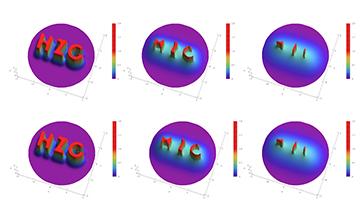
Achievement
This paper presents a new strategy for constructing absorbing boundary conditions suitable for classical (local) and peridynamic (nonlocal) diffusion-type problems in unbounded domains.
Significance and Impact
The proposed absorbing boundary conditions provide effective numerical tools to solve local and nonlocal diffusion-type problems, including heat conduction and mass transport, in unbounded domains. The proposed approach enables solution of unbounded-domain problems within a truncated bounded domain, resulting in significant computational savings.
Research Details
We propose a new strategy for constructing absorbing boundary conditions (ABCs) suitable for classical (local) and peridynamic (nonlocal) diffusion-type problems in unbounded domains. The method is applicable to available meshfree peridynamic discretizations for the nonlocal diffusion as well as the standard finite element method for the local diffusion equation. The proposed ABCs are derived from exponential basis functions, which play the role of vanishing modes, capable of constructing semi-analytical solutions for the exterior domain. Since the ABCs are Dirichlet-type, the method is simple to implement and free from approximating differential operators. The ABCs are developed explicitly in the time domain and thus the method is free from Fourier and Laplace transform procedures. This feature is especially appealing for the peridynamic diffusion-type equation, since the calculation of the corresponding kernel function from the Laplace transform is cumbersome. The performance of the method is studied through various examples, including a 3D corrosion problem. Our investigations demonstrate that the method produces accurate results and exhibits a stable behavior even in the case of long-term computations.
Overview
Diffusion-type problems in (nearly) unbounded domains play important roles in various fields of fluid dynamics, biology, and materials science. The aim of this paper is to construct accurate absorbing boundary conditions (ABCs) suitable for classical (local) as well as peridynamic (nonlocal) diffusion models. The main focus of this work is on the peridynamic diffusion formulation. The majority of the peridynamic diffusion models proposed so far are applied to bounded domains only. In this study, we propose an effective way to handle unbounded domains both with classical and peridynamic diffusion models. For the former, we use the finite element method, whereas for the latter a meshfree discretization is employed. The proposed ABCs are time-dependent and Dirichlet-type, making them easy to implement in the available models. The performance of the approach, in terms of accuracy and stability, is illustrated by numerical examples in 1D, 2D, and 3D.
To view the publication click here.
Last Updated: January 15, 2021 - 10:05 am